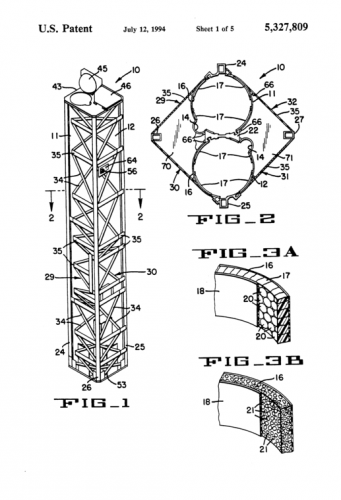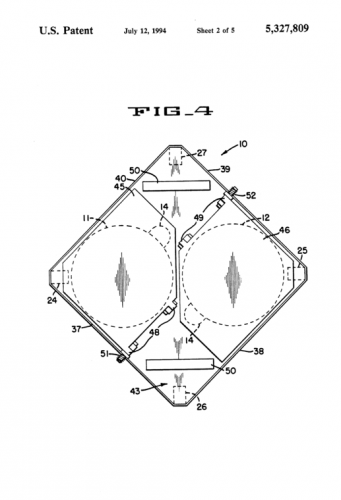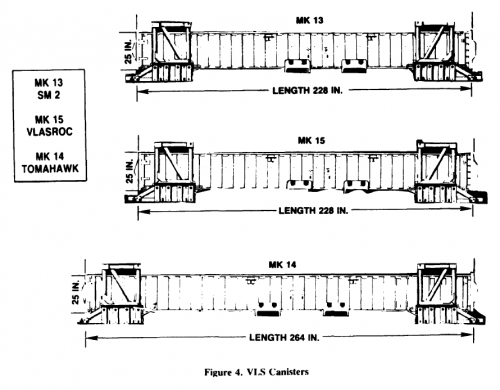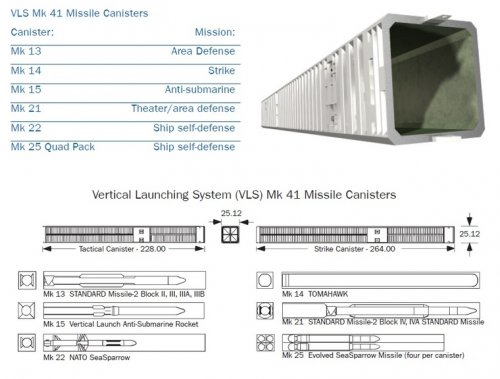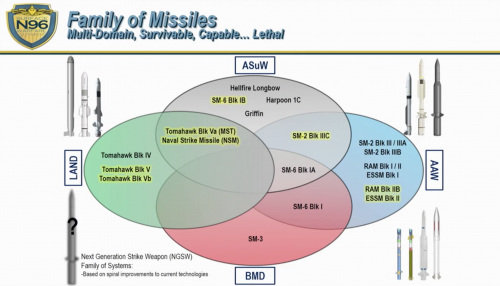You are using an out of date browser. It may not display this or other websites correctly.
You should upgrade or use an alternative browser.
You should upgrade or use an alternative browser.
Standard Missile projects.
- Thread starter Lampshade111
- Start date
- Joined
- 16 April 2008
- Messages
- 8,350
- Reaction score
- 10,160
SpudmanWP said:Is LRASM not long-ranged enough?
It is. Point being, they aren't exactly showing a lot of excitement about buying it (or a comparable weapon) for surface ships.
- Joined
- 16 April 2008
- Messages
- 8,350
- Reaction score
- 10,160
SpudmanWP said:Looks like LRASM for the USN is capped at 25 per year through 2021 (115 total) and the USAF picked up 46 through FY2019. Clearly this is the "stopgap" phase.
And those are all air-launched. Rather than press on with the surface-launched version directly from LRASM as OASuW Increment 2, they've rolled it into Next-Generation Strike Capability, and they keep kicking that can down the road.
litzj
BLOG : http://jaesan-aero.blogspot.com/
If SM series is converted to Surface-to-Surface purpose, How to solve smaller warhead problem?
This surface-to-air missile had experience for air and anti-radiation targets, relatively soft-skinned ones.
Destroying 'big ship' is another problem.
This surface-to-air missile had experience for air and anti-radiation targets, relatively soft-skinned ones.
Destroying 'big ship' is another problem.
- Joined
- 4 July 2010
- Messages
- 2,218
- Reaction score
- 2,100
It's not a "conversion," as they retain their primary anti-air role, it's an added capability via upgraded software. This is an important distinction because all the SM-6s, like all the SM-2s, already out in the fleet's VLS cells are also available to use against Surface targets as opposed to having to make room in the existing missile loadout for a dedicated ASM. As for the warhead question, sure you're unlikely to achieve the immediate destruction of any decent-sized surface combatant via a single SM-6. Shooting one at such a target, you're hoping the mass of the missile and the warhead will combine to damage critical systems (like radar) and degrade or mission-kill the ship. That's not nothing.litzj said:If SM series is converted to Surface-to-Surface purpose, How to solve smaller warhead problem?
This surface-to-air missile had experience for air and anti-radiation targets, relatively soft-skinned ones.
Destroying 'big ship' is another problem.
- Joined
- 16 April 2008
- Messages
- 8,350
- Reaction score
- 10,160
Given that full-caliber SM-6 would be a rather heavy, fast, high-diver, I foresee a whole lot of kinetic energy damage, in addition to the warhead. With luck, a big chunk of the debris blows out through the bottom of the target's hull.
- Joined
- 21 April 2009
- Messages
- 13,139
- Reaction score
- 5,961
TomS said:Given that full-caliber SM-6 would be a rather heavy, fast, high-diver, I foresee a whole lot of kinetic energy damage, in addition to the warhead. With luck, a big chunk of the debris blows out through the bottom of the target's hull.
Absolutely a nice close to vertical hole from the top of the ship through the bottom of the hull would be problematic for continued operations to say the least.
moonbeamsts
ACCESS: Restricted
- Joined
- 5 March 2010
- Messages
- 44
- Reaction score
- 11
Add a fusing option for the warhead for ship attack ,it opens all kinds of mayhem.
litzj
BLOG : http://jaesan-aero.blogspot.com/
thx for answers. with its kinetic energy, sm6 could be deadly for some parts of ship and for good penetration.
but I still doubt it is less powerful than Russian supersonic monsters, having much heavier weight.
is there any news that USN try to develop counter part of Russian or Indian big supersonic missiles?
but I still doubt it is less powerful than Russian supersonic monsters, having much heavier weight.
is there any news that USN try to develop counter part of Russian or Indian big supersonic missiles?
- Joined
- 16 April 2008
- Messages
- 8,350
- Reaction score
- 10,160
litzj said:thx for answers. with its kinetic energy, sm6 could be deadly for some parts of ship and for good penetration.
but I still doubt it is less powerful than Russian supersonic monsters, having much heavier weight.
is there any news that USN try to develop counter part of Russian or Indian big supersonic missiles?
Not recently. Certianly not since the dropped LRASM-B, the supersonic counterpart to the JASSM-derived LRASM-A.
As a practical matter, the USN is limited to antiship weapons that fit a 21-inch canister (maybe a tad more with a thin-wall canister). Anything dramatically bigger than Tomahawk or full-caliber Standard is a non-starter. So about 2 tons is about the practical size limit.
marauder2048
"I should really just relax"
- Joined
- 19 November 2013
- Messages
- 3,157
- Reaction score
- 775
Given the additional internal volume that they have to play with, it's not hard to imagine an enlarged warhead
or an enlarged seeker.
Also, sans booster, the Army could have a potential replacement for GEM-T.
or an enlarged seeker.
Also, sans booster, the Army could have a potential replacement for GEM-T.
bring_it_on
I really should change my personal text
- Joined
- 4 July 2013
- Messages
- 3,123
- Reaction score
- 2,234
A 21' Booster-less SM6 would be a capable PAC-2 replacement though the Army seems to not be in any sort of hurry to replace the legacy missiles or fund a new launcher. There are a few other things the PATRIOT system can borrow from AEGIS besides the SM6. The EASR or something based on it/AMDR would make a capable secondary 360-degree surveillance sensor and is as risk_reduced as one could hope.
- Joined
- 3 June 2011
- Messages
- 17,291
- Reaction score
- 8,972
bring_it_on said:A 21' Booster-less SM6 would be a capable PAC-2 replacement though the Army seems to not be in any sort of hurry to replace the legacy missiles or fund a new launcher.
IIRC PAC-2 has a higher top speed, longer range, and a larger warhead than SM-2MR (RIM-66). (Which is what SM-6 is albeit with a different seeker.)
- Joined
- 16 April 2008
- Messages
- 8,350
- Reaction score
- 10,160
sferrin said:IIRC PAC-2 has a higher top speed, longer range, and a larger warhead than SM-2MR (RIM-66). (Which is what SM-6 is albeit with a different seeker.)
Most of the parameters seem to be very similar, but yes, PAC-3 is much faster than SM-2MR (Mach 5 vs Mach 3.5). It's also rather heavier overall, as one much suspect since ti' considerably wider and a bit longer.
Now, the question would be how a full-caliber SM-6 performs. It's wider than Patriot and probably even heavier. How they decide to balance the motor (for speed versus range) is kind of an unknown at this point.
- Joined
- 3 June 2011
- Messages
- 17,291
- Reaction score
- 8,972
TomS said:sferrin said:IIRC PAC-2 has a higher top speed, longer range, and a larger warhead than SM-2MR (RIM-66). (Which is what SM-6 is albeit with a different seeker.)
Most of the parameters seem to be very similar, but yes, PAC-3 is much faster than SM-2MR (Mach 5 vs Mach 3.5). It's also rather heavier overall, as one much suspect since ti' considerably wider and a bit longer.
Now, the question would be how a full-caliber SM-6 performs. It's wider than Patriot and probably even heavier. How they decide to balance the motor (for speed versus range) is kind of an unknown at this point.
You seem to be conflating PAC-2 and PAC-3. (Looks like it could be a typo though.) The range I've seen associated with PAC-2 is about 100 miles. Best I've ever seen with SM-2MR is about 80. Also PAC-2 carries a bigger warhead, one that is optimized for killing ballistic missile warheads (though it is not hit-to-kill). A "full caliber" SM-2 upper stage would probably require a new Patriot launcher or a reduction in missiles per trailer.
- Joined
- 16 April 2008
- Messages
- 8,350
- Reaction score
- 10,160
Yeah, just a typo; I was looking at PAC-2 GEM numbers, which match what you cited. But I've seen 90 nm range cited for SM-2MR (from the US Navy Fact File, so apparently official). That's not a huge difference in real terms. As far as warhead weight, I was surprised to see that the Mk 125 warhead is supposedly around 300 pounds, which is actually heaver than PAC-2 (185 pounds, roughly).
I agree that full caliber SM-2MR would be a very heavy missile, and might well require modifying the Patriot launcher to beef up hydraulics and the suspension. But it wouldn't be totally incompatible -- if you can quadpack 10-inch PAC-3s into the same space as a PAC-2 canister, you should be able to fit a single 21-inch missile in the same cross-section.
I agree that full caliber SM-2MR would be a very heavy missile, and might well require modifying the Patriot launcher to beef up hydraulics and the suspension. But it wouldn't be totally incompatible -- if you can quadpack 10-inch PAC-3s into the same space as a PAC-2 canister, you should be able to fit a single 21-inch missile in the same cross-section.
- Joined
- 3 June 2011
- Messages
- 17,291
- Reaction score
- 8,972
TomS said:Yeah, just a typo; I was looking at PAC-2 GEM numbers, which match what you cited. But I've seen 90 nm range cited for SM-2MR (from the US Navy Fact File, so apparently official). That's not a huge difference in real terms. As far as warhead weight, I was surprised to see that the Mk 125 warhead is supposedly around 300 pounds, which is actually heaver than PAC-2 (185 pounds, roughly).
I agree that full caliber SM-2MR would be a very heavy missile, and might well require modifying the Patriot launcher to beef up hydraulics and the suspension. But it wouldn't be totally incompatible -- if you can quadpack 10-inch PAC-3s into the same space as a PAC-2 canister, you should be able to fit a single 21-inch missile in the same cross-section.
Hmm. The information I'm finding has the Mk 125 warhead at 115kg (253lb). (Though I've seen the 300 figure tied to SM-4 LASM.) SM-6's warhead seems to be closer to 140lbs. (64kg) (Which could indicate that it has a higher performance than the latest RIM-66 since the warhead is roughly half the weight.)
- Joined
- 16 April 2008
- Messages
- 8,350
- Reaction score
- 10,160
sferrin said:TomS said:Yeah, just a typo; I was looking at PAC-2 GEM numbers, which match what you cited. But I've seen 90 nm range cited for SM-2MR (from the US Navy Fact File, so apparently official). That's not a huge difference in real terms. As far as warhead weight, I was surprised to see that the Mk 125 warhead is supposedly around 300 pounds, which is actually heaver than PAC-2 (185 pounds, roughly).
I agree that full caliber SM-2MR would be a very heavy missile, and might well require modifying the Patriot launcher to beef up hydraulics and the suspension. But it wouldn't be totally incompatible -- if you can quadpack 10-inch PAC-3s into the same space as a PAC-2 canister, you should be able to fit a single 21-inch missile in the same cross-section.
Hmm. The information I'm finding has the Mk 125 warhead at 115kg (253lb). (Though I've seen the 300 figure tied to SM-4 LASM.) SM-6's warhead seems to be closer to 140lbs. (64kg) (Which could indicate that it has a higher performance than the latest RIM-66 since the warhead is roughly half the weight.)
Warhead weights are notoriously fuzzy things. Could be looking at differences between explosive weight, warhead (explosive fill plus casing), and weight including the TDD.
JakobS
I really should change my personal text
- Joined
- 28 October 2016
- Messages
- 13
- Reaction score
- 1
Wouldn't it be easier to just put a new seeker on PAC-2?
Seems to me it dosen't need more range or to be hit-to-kill. An active seeker would greatly improve it's ability to counter cruise missiles and smaller UAV's.
Seems to me it dosen't need more range or to be hit-to-kill. An active seeker would greatly improve it's ability to counter cruise missiles and smaller UAV's.
- Joined
- 3 June 2011
- Messages
- 17,291
- Reaction score
- 8,972
TomS said:sferrin said:TomS said:Yeah, just a typo; I was looking at PAC-2 GEM numbers, which match what you cited. But I've seen 90 nm range cited for SM-2MR (from the US Navy Fact File, so apparently official). That's not a huge difference in real terms. As far as warhead weight, I was surprised to see that the Mk 125 warhead is supposedly around 300 pounds, which is actually heaver than PAC-2 (185 pounds, roughly).
I agree that full caliber SM-2MR would be a very heavy missile, and might well require modifying the Patriot launcher to beef up hydraulics and the suspension. But it wouldn't be totally incompatible -- if you can quadpack 10-inch PAC-3s into the same space as a PAC-2 canister, you should be able to fit a single 21-inch missile in the same cross-section.
Hmm. The information I'm finding has the Mk 125 warhead at 115kg (253lb). (Though I've seen the 300 figure tied to SM-4 LASM.) SM-6's warhead seems to be closer to 140lbs. (64kg) (Which could indicate that it has a higher performance than the latest RIM-66 since the warhead is roughly half the weight.)
Warhead weights are notoriously fuzzy things. Could be looking at differences between explosive weight, warhead (explosive fill plus casing), and weight including the TDD.
True. There's also a "Mod 2" version of the Mk125, whatever that means. And sometimes one reads so many things over the years trying to keep the details straight can be. . .problematic. I was convinced the MIM-104 had a 285lb warhead (where I'd seen that God only knows) and that they'd also ported over the AIM-120 warhead to SM-6. :-[
bring_it_on
I really should change my personal text
- Joined
- 4 July 2013
- Messages
- 3,123
- Reaction score
- 2,234
JakobS said:Wouldn't it be easier to just put a new seeker on PAC-2?
Seems to me it dosen't need more range or to be hit-to-kill. An active seeker would greatly improve it's ability to counter cruise missiles and smaller UAV's.
Yes, it will be relatively easy and not very different from what the Navy is doing with the ESSM Block 2 or what was done on the SM-6. The Army could even borrow and scale the seeker as Raytheon has done it a few times now. This is very much a possibility given that it appears that PAC-2 integration does not seem to be a current requirement for LTAMDS (see below). That said, I'm sure they could do a lot better if they took a little more risk and explored a longer ranged AAW interceptor that would still offer the loadout advantage on the launcher side (like 8 interceptors pre launcher). Raytheon, could on their own explore the PAC-2 upgrade given that the MSE has now had its full rate production and will be more available really putting a lot of pressure on the big interceptor from an export perspective. If they don't keep the PAC-2 relevant I don't see it being a big export revenue earner for them in the coming decade.
The prototype LTAMDS radar must be interoperable with Army Integrated Air and Missile Defense (AIAMD) Integrated Battle Command System (IBCS) command / control and PATRIOT Advanced Capability - 3 (PAC-3) class of interceptors, and meet the performance requirements as defined in the LTAMDS performance specification. The Government intends to use the DOTC OTA to potentially fund up to three (3) vendors for TMRR beginning in FY18 and beyond. The expected prototype deliverable quantity is one (1) demonstration report per technology selected. The feasibility of the prototype will be demonstrated and tested by the Contractor and witnessed by the Government. LINK
Sea Skimmer2
I really should change my personal text
- Joined
- 12 August 2018
- Messages
- 4
- Reaction score
- 6
JakobS said:Wouldn't it be easier to just put a new seeker on PAC-2?
Seems to me it dosen't need more range or to be hit-to-kill. An active seeker would greatly improve it's ability to counter cruise missiles and smaller UAV's.
Done done
https://www.globalsecurity.org/space/systems/patriot-acm.htm
PACM standing for Patriot Anti Cruise Missile project cancelled around 2000. Got as far as two successful live firings, but it also cost over 1 million dollars to upgrade an existing missile with the active homing system, and said missile would not have the same service lifespan of a new missile. After PAC-3 proved able to hit low altitude targets the Army cancelled PACM and launched multiple programs under the heading of 'Low Cost Interceptor' to give MEADS something cheaper to fire, one of these was a new solid fuel missile and one was an interceptor version of the MALD decoy drone. Those efforts had several live firings as well, then got downscaled to solid fuel AMRAAM class missile that had some more basic tests...then the war in Iraq ate all the funding and SLAMRAAM itself was cancelled too.
10 years later the US Army is talking about a lower cost missile for Patriot again....
bring_it_on
I really should change my personal text
- Joined
- 4 July 2013
- Messages
- 3,123
- Reaction score
- 2,234
The various LCI and other related efforts are extensively documented in the various threads here. Fast forward to 2018, the Army now has a much better grasp on how best to approach low-cost RF seekers and they continue to invest down that road. I believe Lockheed has been working on affordable active phased array seekers under a couple of contracts from the Army. Similarly, Raytheon can probably do a lot better now given their scale with the AMRAAM, SM6, possibly SM2 Active and the ESSM Block 2. There is volume and scale there.
- Joined
- 16 April 2008
- Messages
- 8,350
- Reaction score
- 10,160
Sort of an old idea (the patent is from 1994) but I've never seen art for it before.
Dual-Pack Canister for the Mk 41 VLS.
The missile is not named in the patent, but at the time, they were talking about something derived from SM2MR minus the fins. This one seems to be related to Block IIIB with the side-mounted IR seeker.
Dual-Pack Canister for the Mk 41 VLS.
The missile is not named in the patent, but at the time, they were talking about something derived from SM2MR minus the fins. This one seems to be related to Block IIIB with the side-mounted IR seeker.
Attachments
Dilandu
I'm dissatisfied, which means, I exist.
I wonder, was there any proposals to mate the AIM-54 active seeker head with SM-2ER missile body in 1970-1980s? After all, the "Sea Phoenix" was proposed, so the basic idea of active-seeker surface-to-air missile was around. `
Granted, the AIM-54 have an inch more diameter than RIM-67, so it may represent quite a few technical challenges.
Granted, the AIM-54 have an inch more diameter than RIM-67, so it may represent quite a few technical challenges.
- Joined
- 3 June 2011
- Messages
- 17,291
- Reaction score
- 8,972
TomS said:Sort of an old idea (the patent is from 1994) but I've never seen art for it before.
Dual-Pack Canister for the Mk 41 VLS.
The missile is not named in the patent, but at the time, they were talking about something derived from SM2MR minus the fins. This one seems to be related to Block IIIB with the side-mounted IR seeker.
Wish they gave dimensions of the "real" cell. If they're able to stuff an ATACMs in there (or LRASM, which is also bigger than the released cell size) "22-in" is a bit on the low side.
Sea Skimmer2
I really should change my personal text
- Joined
- 12 August 2018
- Messages
- 4
- Reaction score
- 6
It's a 25.12in box including the canister walls. Which from the way some programs for bigger missiles have been worded, it sounds like it's feasible to reduce for some amount of extra money. Nothing a little extruded titanium can't solve.
Attachments
GWrecks
Big Wingy Thingy
- Joined
- 15 July 2018
- Messages
- 76
- Reaction score
- 16
My professor worked in the Navy as part of missile development in the Cold War and mentioned something about a Standard Missile derivative with ramjet propulsion...I'm not sure what he means by this and I didn't want to ask further because I'm merely his student and asking about missiles in after-hours of a GD&T class seems a bit odd to me. Not to mention, a bunch of stuff he did is still under wraps today.
Does anyone know of such a project? I've known another person in the Navy and when I showed her the Submersible Nuclear Ramjet she told me that things about as bizarre were still being proposed into the 80s, but they were generally axed much more quickly. So if the ramjet version of the Standard missile was just something proposed but not part of a serious study I wouldn't be surprised.
EDIT: Silly me, I decided to search the board after I made this post...
https://www.secretprojects.co.uk/forum/index.php/topic,466.msg230848.html#msg230848
It seems that there was an ASALM variant meant for Mk 41 VLS, which suggests to me that it may be the ramjet-propelled missile he's talking about. He never specifically said the missile itself was based upon the Standard, so he might have meant that it can be used in the same launcher (Mk 41 VLS) as a Standard Missile.
Does anyone know of such a project? I've known another person in the Navy and when I showed her the Submersible Nuclear Ramjet she told me that things about as bizarre were still being proposed into the 80s, but they were generally axed much more quickly. So if the ramjet version of the Standard missile was just something proposed but not part of a serious study I wouldn't be surprised.
EDIT: Silly me, I decided to search the board after I made this post...
https://www.secretprojects.co.uk/forum/index.php/topic,466.msg230848.html#msg230848
It seems that there was an ASALM variant meant for Mk 41 VLS, which suggests to me that it may be the ramjet-propelled missile he's talking about. He never specifically said the missile itself was based upon the Standard, so he might have meant that it can be used in the same launcher (Mk 41 VLS) as a Standard Missile.
- Joined
- 16 April 2008
- Messages
- 8,350
- Reaction score
- 10,160
Depending on how old your prof is, he could also be talking about Typhon LR, a ramjet powered Terrier replacement. Typhon SR evolved into Standard MR, and Typhon LR might be seen as a relative of Standard ER.
bring_it_on
I really should change my personal text
- Joined
- 4 July 2013
- Messages
- 3,123
- Reaction score
- 2,234
- Joined
- 3 June 2011
- Messages
- 17,291
- Reaction score
- 8,972
bring_it_on said:
Looks like they have an SM-6 Block IB up there too.
"On Jan. 17, the Navy approved plans to develop a Dual Thrust Rocket Motor with a 21-
inch diameter for the SM-6, which is currently fielded with a 13.5-inch propulsion package.
The new rocket motor would sit atop the current 21-inch booster, producing a new variant
of the missile: the SM-6 Block IB"
bring_it_on
I really should change my personal text
- Joined
- 4 July 2013
- Messages
- 3,123
- Reaction score
- 2,234
That's why I posted it here 
- Joined
- 3 June 2011
- Messages
- 17,291
- Reaction score
- 8,972
- Joined
- 16 April 2008
- Messages
- 8,350
- Reaction score
- 10,160
Talking about the grey missile at top right? Surprised they kept the forward fuselage at13.5 inches, but I guess that's the minimum-change solution to get improved kinematics without redesigning the warhead or seeker at all.
bring_it_on
I really should change my personal text
- Joined
- 4 July 2013
- Messages
- 3,123
- Reaction score
- 2,234
I think that would work for now given that this had come in as an unfunded priority from the CNO that they wanted to move fast IIRC. They could work on upgrading the seeker and warhead in future variants.
marauder2048
"I should really just relax"
- Joined
- 19 November 2013
- Messages
- 3,157
- Reaction score
- 775
Are they really viewing it primarily as an ASuW weapon?
bring_it_on
I really should change my personal text
- Joined
- 4 July 2013
- Messages
- 3,123
- Reaction score
- 2,234
I think that this may be a mistake in the slide. Even if the upgrade was primarily meant to enhance its ASuW capability it should still retain the AAW and SBT roles unless they have done away with some of the agility requirements which would be very strange.
Similar threads
-
Proposed Taurus cruise missile variants
- Started by Voltzz
- Replies: 19
-
-
Emerson Electric WASP Missile
- Started by Mark Nankivil
- Replies: 9
-
Aegis Ashore launches Standard Missile-3 for first time
- Started by seruriermarshal
- Replies: 14
-
Brazilian missile/rocket projects
- Started by batigol
- Replies: 10

